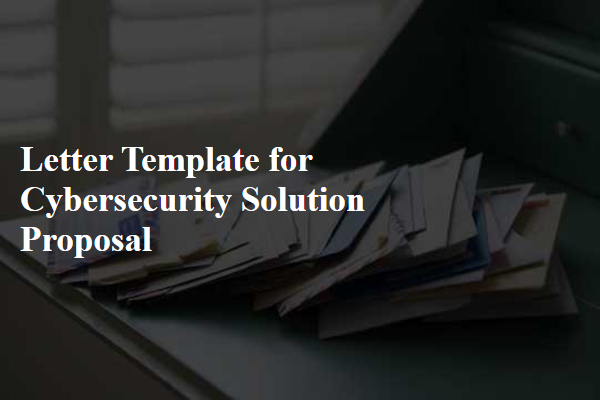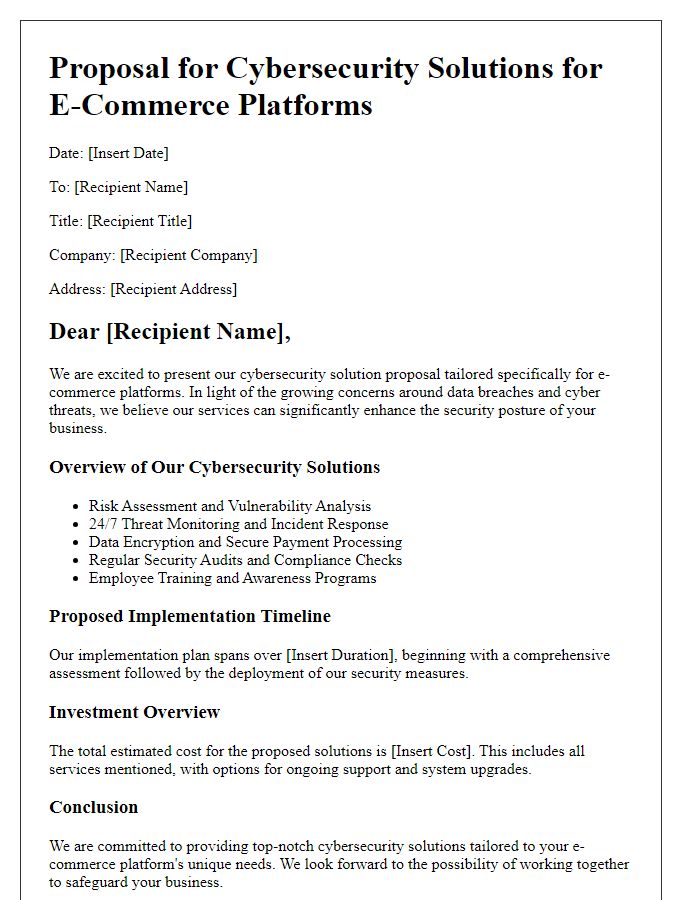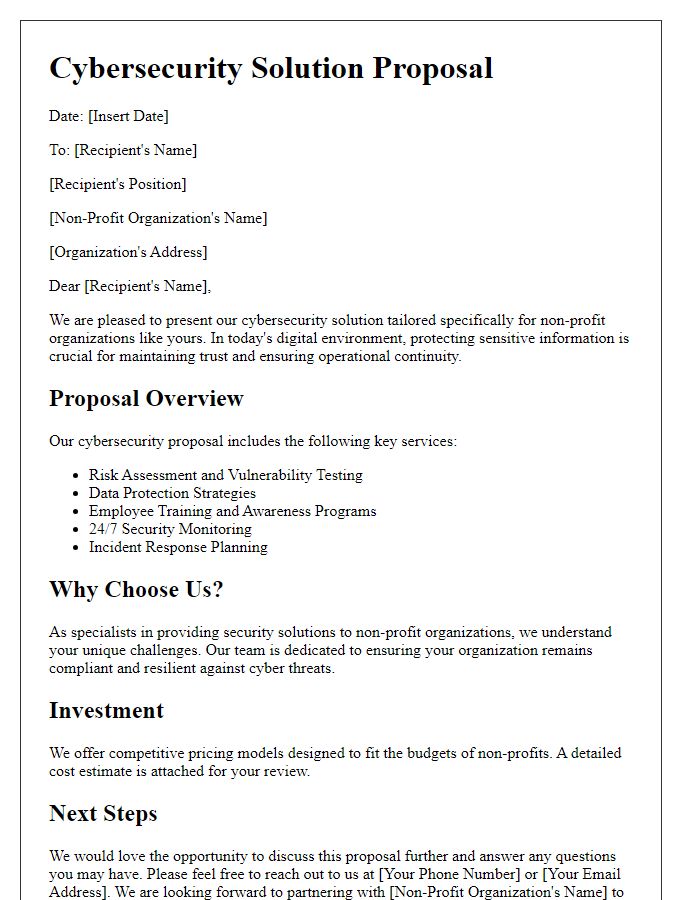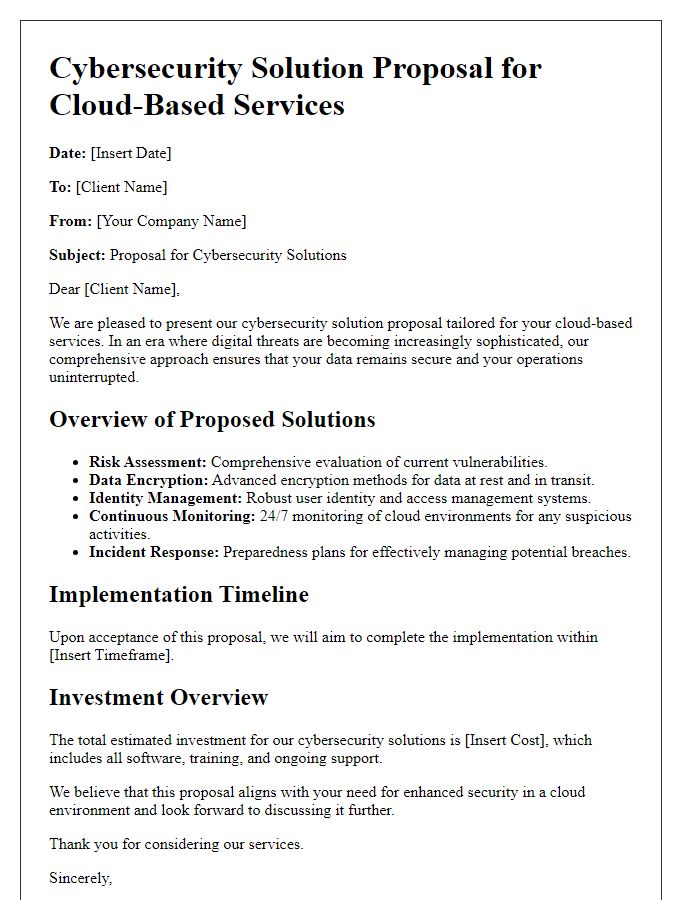In today's digital landscape, cybersecurity has become more critical than ever, as businesses face increasing threats from cybercriminals. Crafting a compelling cybersecurity solution proposal is essential to communicate the value of your services effectively. This article will guide you through the key elements of an impactful proposal that speaks to clients' needs while showcasing your expertise. So, let's dive in and explore how to create a winning cybersecurity proposal together!

Client's business needs and pain points
Business needs in cybersecurity for small companies often include ensuring compliance with regulations such as GDPR (General Data Protection Regulation) or HIPAA (Health Insurance Portability and Accountability Act). Many organizations face pain points like frequent phishing attacks targeting employees or vulnerabilities in outdated software systems. Additionally, data breaches involving sensitive customer information can lead to severe financial losses, not to mention the reputational damage that can result from public exposure of such incidents. Secure network solutions, like firewalls and encryption, are vital to protect intellectual property and sensitive personal data. Furthermore, employee training on cyber hygiene practices is essential to minimize human-related risk factors in safeguarding digital assets.
Detailed solution overview
A comprehensive cybersecurity solution includes multiple layers of protection designed to safeguard sensitive data and information systems. Important components include advanced firewalls (hardware and software solutions to monitor and control incoming and outgoing network traffic), intrusion detection systems (software applications designed to identify potential threats in real-time), and encryption technologies (processes that transform information to protect it from unauthorized access). Regular updates and patch management (the process of installing updates to software applications to fix security vulnerabilities) are vital to defend against new threats, with an emphasis on training employees in security awareness (educational programs to help staff recognize phishing attacks and social engineering tactics). Additionally, implementing regular risk assessments (the process of identifying potential hazards and vulnerabilities) ensures continual improvement of the security posture. The integration of incident response plans (predefined procedures to follow during a cybersecurity incident) provides organizations with the ability to respond effectively to breaches, minimizing data loss and service disruption.
Technical specifications and compatibility
A cybersecurity solution proposal must outline specific technical specifications and compatibility requirements to ensure seamless integration into existing systems. Key components include network security protocols, such as AES-256 encryption standards, designed to protect sensitive data during transmission. The solution should support multi-factor authentication (MFA) methods like Time-based One-Time Passwords (TOTP) and biometrics for enhanced user access security. Compatibility with various operating systems, including Windows 10, macOS Monterey, and various distributions of Linux, is crucial. The proposal should also specify compatibility with commonly used software applications, such as Microsoft Office 365 and cloud services like AWS and Azure, ensuring the solution is versatile and meets the diverse needs of end-users. Additionally, providing detailed information on system requirements, such as minimum RAM (8GB) and processor specifications (Intel i5 or equivalent), will help stakeholders evaluate the feasibility of implementation.
Cost analysis and ROI
The implementation of a comprehensive cybersecurity solution involves various financial considerations. Initial costs typically range from $10,000 to $100,000, depending on the complexity of the solution chosen as well as the size of the organization. This investment includes software licensing, hardware upgrades, and potential staff training programs. Additionally, ongoing operational expenses such as maintenance and support can average between 15% to 25% of the initial expenditure annually. To assess the Return on Investment (ROI), considering potential losses from data breaches, which averaged $3.86 million per incident (according to IBM's 2020 Cost of a Data Breach Report), highlights the critical nature of investment in cybersecurity measures. Organizations can expect to realize ROI improvements through enhanced data protection, reduced risk of financial loss, and increased customer trust, ultimately leading to business sustainability. Evaluating both quantitative metrics like breach avoidance and qualitative factors such as brand reputation will provide a comprehensive understanding of the long-term benefits of the proposed cybersecurity solution.
Implementation timeline and support
A comprehensive cybersecurity solution proposal includes an implementation timeline and ongoing support framework to ensure optimal protection for sensitive data. The initial phase, typically lasting 2-3 weeks, involves assessing vulnerabilities within the organization's IT infrastructure, including network security (firewalls, intrusion detection systems) and endpoint protection (antivirus software). Following the assessment, deployment of advanced security technologies can begin, scheduled over a subsequent 4-6 weeks, incorporating solutions like multi-factor authentication and encryption protocols to safeguard data in transit and at rest. User training sessions (approximately 1 week) are crucial during the rollout, ensuring employees understand security best practices. Post-implementation, a dedicated support team remains available 24/7 for incident response and regular system updates to address emerging threats and compliance requirements, maintaining a robust security posture within the organization. Regular audits and assessments are recommended on a quarterly basis to evaluate the effectiveness of the cybersecurity measures and adapt to the evolving threat landscape.
Letter Template For Cybersecurity Solution Proposal Samples
Letter template of cybersecurity solution proposal for large enterprises

Letter template of cybersecurity solution proposal for healthcare organizations

Letter template of cybersecurity solution proposal for educational institutions

Letter template of cybersecurity solution proposal for financial services

Letter template of cybersecurity solution proposal for government agencies

Letter template of cybersecurity solution proposal for e-commerce platforms

Letter template of cybersecurity solution proposal for non-profit organizations







Comments